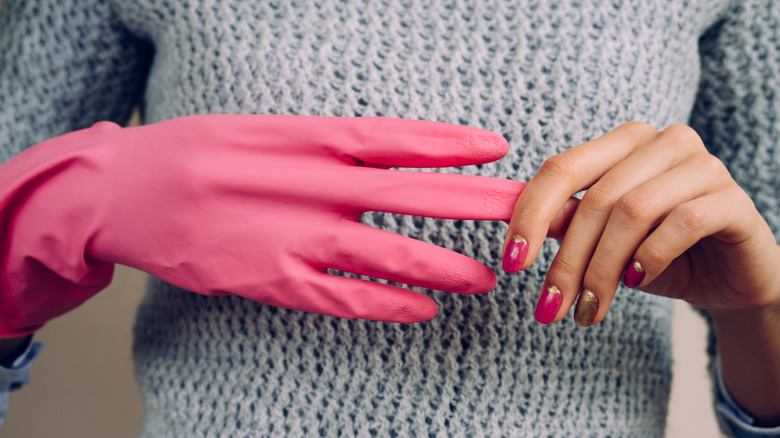Don't Toss Rubber Gloves – Cut for Waterproof Plant Ties

Creative Ways to Repurpose Old Rubber Gloves
Some items, like the cardboard box your online purchase arrived in, are clearly recyclable and easy to dispose of in an eco-friendly way. However, not all materials are as straightforward. For instance, rubber gloves fall into a category that is neither biodegradable nor easily recyclable through standard curbside programs. While they can be recycled in theory, the process is often complicated due to limited drop-off points and the lack of acceptance by many recycling services. Instead of letting these gloves end up in a landfill, there’s a more sustainable alternative: repurposing them.
Rubber gloves, especially those used in the kitchen, are surprisingly durable and flexible even after some wear and tear. The main reason people stop using them is usually due to a small cut or tear, which makes them unsuitable for tasks like washing dishes but ideal for other purposes. By cutting them up, you can transform them into DIY plant ties — a practical and environmentally friendly solution.
Benefits of Using Rubber Gloves as Plant Ties
Using old rubber gloves as plant ties offers several advantages. Unlike zip ties or rough twine, rubber gloves won’t dig into delicate stems or degrade when exposed to rain. They provide a gentle yet secure hold, allowing plants to sway naturally without causing damage. This makes them particularly useful for supporting young trees, fast-growing plants, or tomato plants that require regular adjustments.
Additionally, repurposing rubber gloves helps reduce waste and saves money. Instead of purchasing new plant ties, you can use something you already have at home. It’s a simple, satisfying project that takes just a few minutes and gives a second life to items that would otherwise be discarded.
How to Make Plant Ties from Rubber Gloves
To begin, it's important to clean and dry the gloves thoroughly. Any leftover dish detergent residue could potentially harm your plants, so make sure they’re completely free of chemicals. Once clean, use a sharp pair of craft or kitchen scissors to cut off the cuff portion of the glove — this is the thicker, rolled area near the wrist.
Next, continue cutting across the width of the cuff to create rubber rings or bands. The thickness of the cuts will determine how sturdy or stretchy the ties are. These looped bands can be used as-is or snipped open if you need longer lengths. You can also cut the fingers into smaller elastic bands for different applications. Alternatively, keep them whole for other DIY projects, such as spreading glue or sealant.
Practical Uses in the Garden
When it comes to using the plant ties in your garden, simply loop a strip around the plant stem and the support structure you're using, then tie it gently. The elasticity of the rubber allows the plant to move freely with the wind without causing any damage. This method is especially effective for plants that require frequent adjustments or those with tender stems.
If you regularly wear rubber gloves while cleaning, this is a great way to extend their usefulness and contribute to environmental sustainability. It’s a small change that can make a big difference in reducing waste and promoting eco-friendly habits.
By thinking creatively about everyday items, you can find new ways to reuse and recycle materials that might otherwise end up in a landfill. Repurposing rubber gloves as plant ties is just one example of how small actions can lead to significant positive impacts on the environment.
Komentar
Posting Komentar